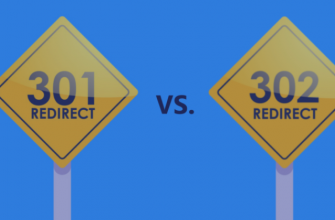Almost every SEO specialist has encountered a situation where a minor change to a site by the web developers has ruined his efforts and the site has lost positions and traffic. And paradoxically, the larger the company, the more acute the problem.
In small groups, cooperation between SEO and devs happens more naturally, but the larger the team, the more often information is lost, the teams are not aware of each other’s plans and priorities, and begin to clash.
A couple of years ago, in a large company we saw a vivid example of a lack of cooperation between the developers and the SEO department. At that time, the developers, without the consent of the SEO specialists, denied access to the site to crawlers, including search engine robots, and at some point the pages disappeared from the index and search.
The issue was quickly identified and solved, but the “residue” remained. Can these situations be avoided? Definitely! Establish cooperation between departments. We have already written about how to establish communication between an SEO agency and its client’s web developers. When a search engine optimization project is handled by an agency or an external expert, the communication is formalized in a contract and both parties understand their responsibilities.
Communications inside of a company are more complicated, since different companies have different cultures of communication, and processes are designed differently.
If the processes of communication are well established, great! But believe me, even in large companies, this is not always the case.
We’ve gathered a few tips that may help your teams.
Understanding the value of SEO
First, team leaders should discuss the value of SEO and explain to their teams how to link their goals to the overall goals of the company, so that the development department understands that marketers and SEO drive sales and bring success to the company and to them personally.
Reports to SEO before any modification is done
Make a rule: any changes to the site should pass through the SEO department; then no change will go unnoticed.
Also, the SEO department can create checklists which web developers can use to evaluate the criticality of changes to the site for SEO. This is the best solution if for some reason it is not possible to tightly coordinate processes between departments.
Meetings
It will be useful to conduct a series of meetings, at which SEOs disclose the basic principles of search engine optimization and highlight the possible risks, and developers share their problems and “pains”. In a few such half-hour meetings, their relationship to each other’s problems will change dramatically.
However, this doesn’t necessarily have to be an official educational event, as normally teams are quite successful at building communication through a series of informal team meetings (“Why not grab some pizza on Friday afternoon?”).
Revision before release
SEO specialists should always check the developers’ completed tasks and evaluate them from the point of view of performance — ideally just before the release.
Dashboards
Dashboards on monitors in the kitchen, at the entrance to the office, or in the break room also allow employees to feel like part of a big team, not just part of their department. In this case, it’s especially helpful if the SEO department highlights on the charts how the site has performed better after developer implementations.
If the agreement fails: How to identify a negative impact on SEO?
No matter if SEO and web developers are friends (or not), there are many details involved in search engine optimization, and failures happen.
How do you know that a deterioration in SEO results is due to some changes on the site that the SEO specialist might not have known about?
It is important to record the name and date of implementation for each task which can potentially affect the dynamics of positions. For example, it can be done on the SEOWORK platform in the GA or marked on the Visibility dashboard with important SEO metrics.
If, after implementation, you start to observe deterioration in results, you need to look at when the task was implemented and check whether search engines took into account what was done, for example, whether the search index has changed, whether the saved copies of pages where edits were made have changed, etc.
If the changes affected a certain category of pages or just a group of pages, then it is worth monitoring visibility metrics for that narrow segment and comparing the visibility dynamics by site/category with the visibility dynamics of the segment, whether it is knocked out or not.
Keep track of potentially “risky” changes (or better yet, all changes), monitor positions and traffic on a regular basis, and communicate with the web developers department.
If a fall in position has already occurred, but nothing “special” on the site has been implemented, then you need to watch and analyze the saved copies, web archive and logs, which can catch changes. Sometimes you even have to play the “find 10 differences” game, but here the important goal is to detect the problem.
It also helps to track whether non-target pages began to rank. If this is the case, it is worth checking why one page “popped” and “pushed down” the other. It is important to regularly check for 404 errors; for example, this can be daily monitoring of critical errors, or setting up automatic notifications to email if issues appear.









